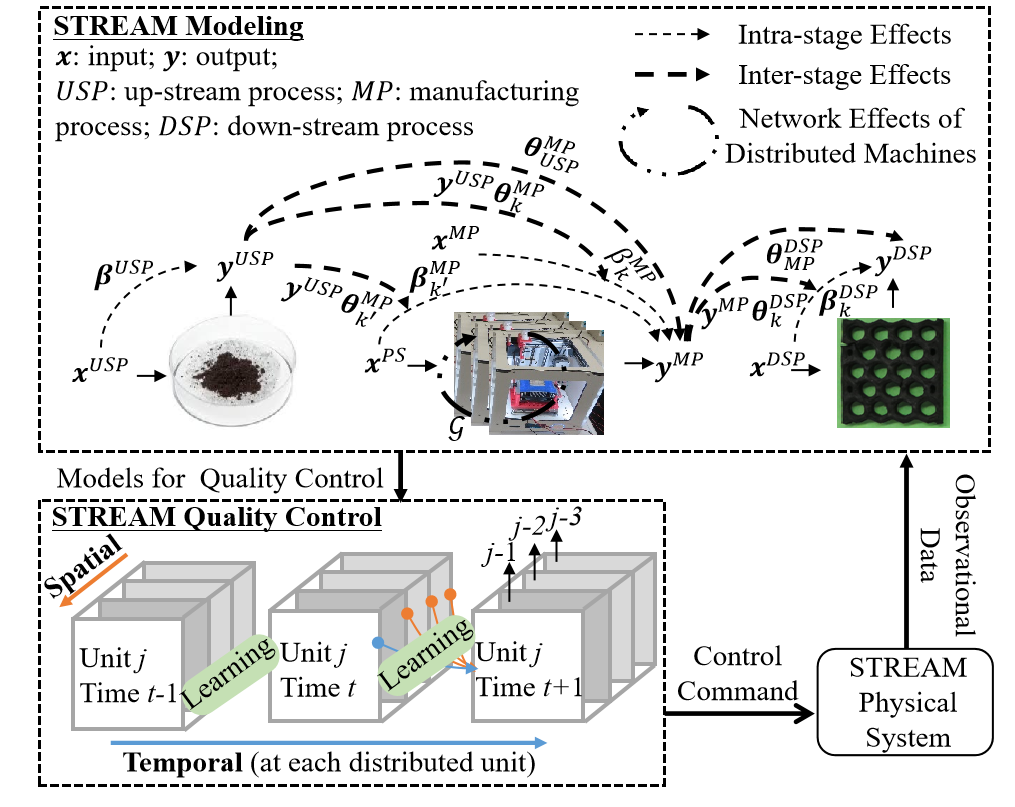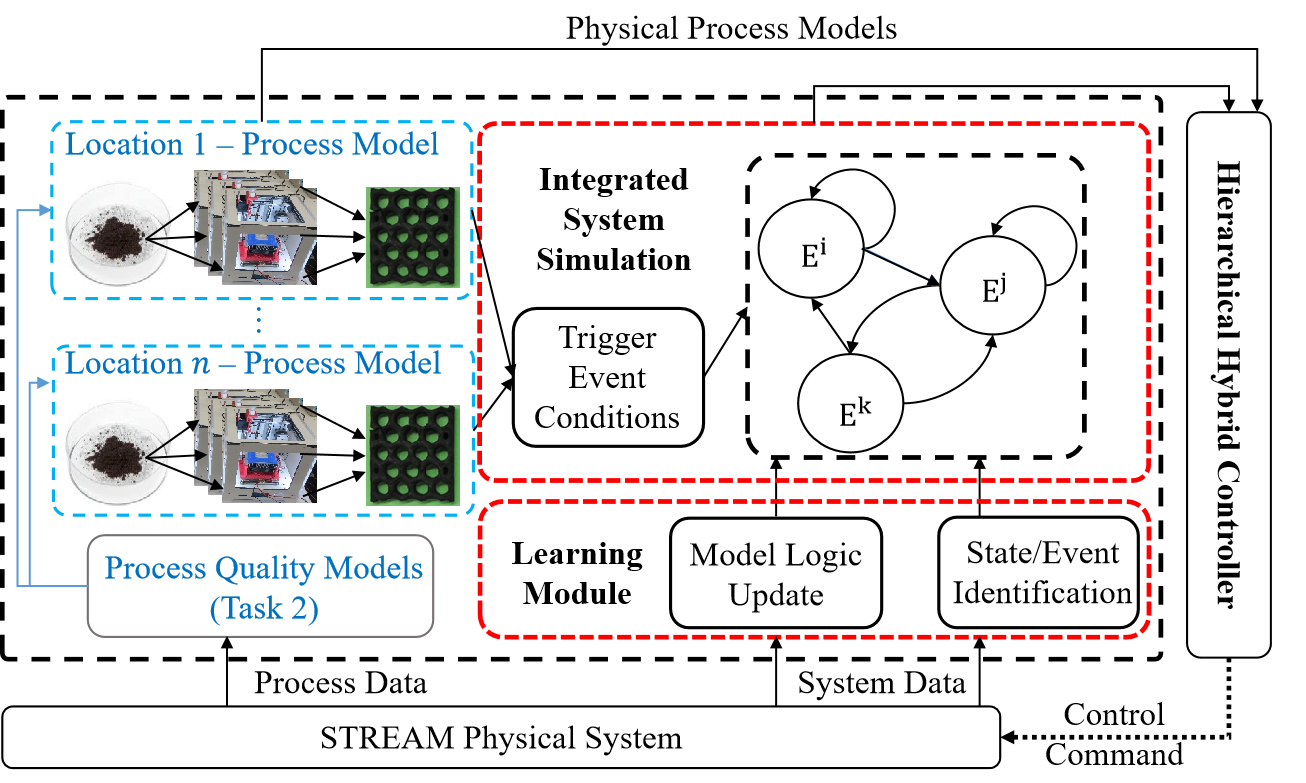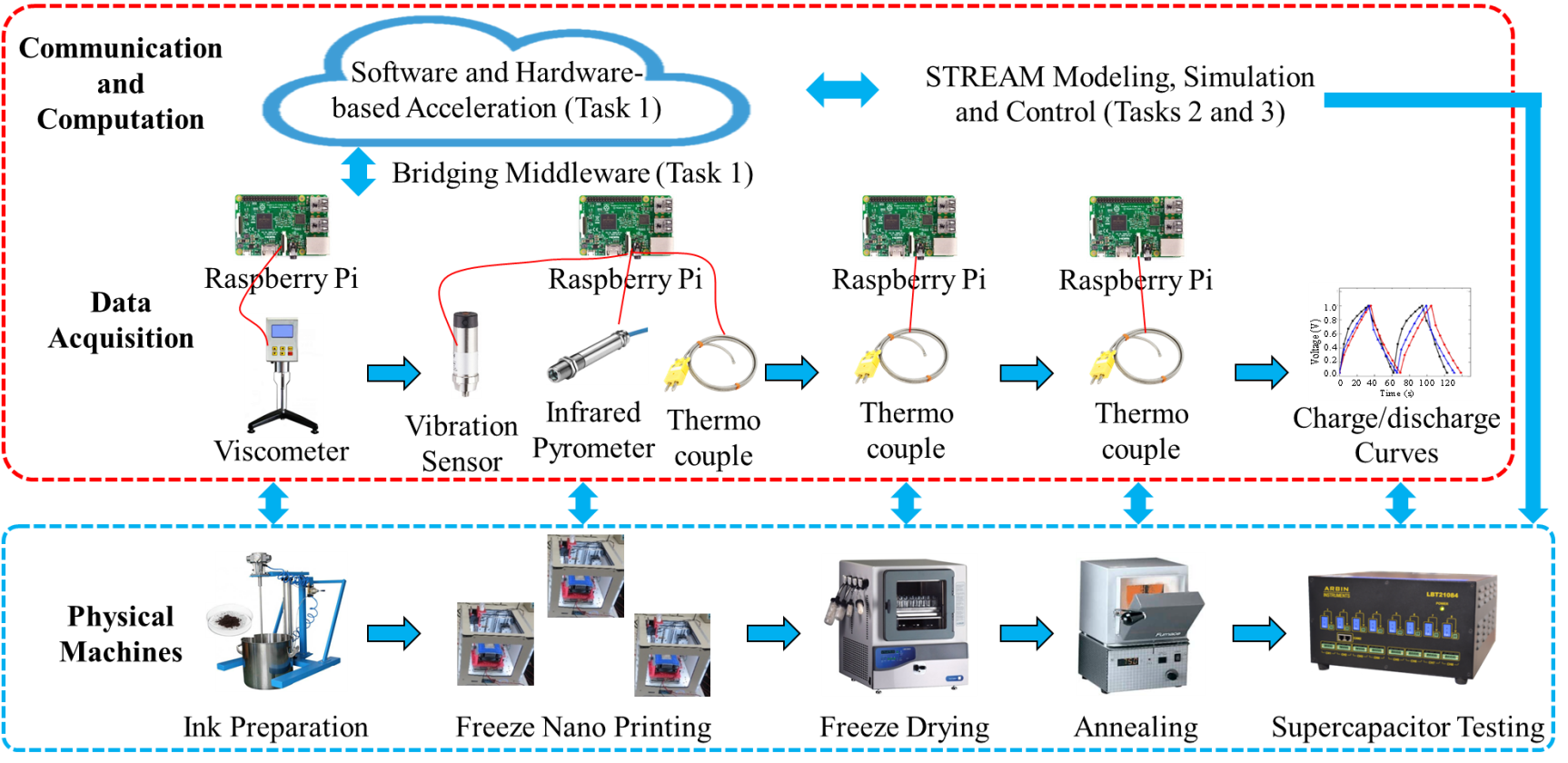
Task 1: STREAM architecture design and implementation
We propose a unique STREAM architecture that joins the force of a bridging middleware to support the interoperation of heterogeneous machines and monitoring devices, and a software (cross-end task allocation scheme) and hardware-based accelerators for reducing time delay in communication and computation. The STREAM architecture will be embodied across the machine, edge and cloud ends, and support Tasks 2-3 of modeling and simulation for quality and production control.

Task 2: STREAM modeling and quality control
We propose novel machine learning models to address the high-dimensional functional dependencies among stages and identify important variables in the large parameter space. Based on these models, we propose an iterative learning controller that adapts from temporal and spatial information to control the product quality. The process condition and quality information will also be streamed into Task 3 of production control.

Task 3: STREAM simulation and production control
We propose novel multi-resolution distributed simulators with dynamics check to seamlessly emulate and coordinate the STREAM. These simulators, serving as the digital twins of physical entities, will be continuously updated by detecting the switch conditions of the physical system during dynamics check. We propose a hybrid controller to manage system operations, with the consideration of quality and resource constraints from Task 2.


